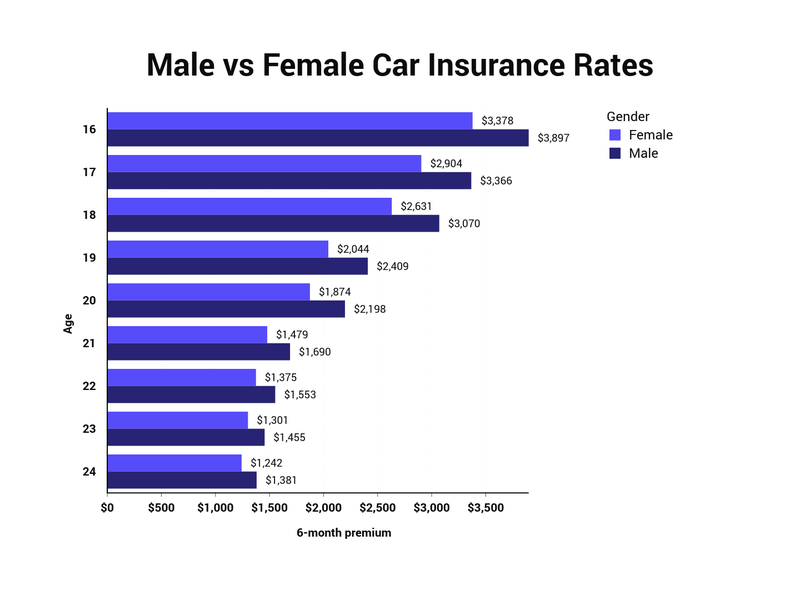Another aspect impacting the level of premiums is the cost of administering a health insurance. Some administrative expenses (such as those for customer support) vary with the number of enrollees in a plan, but others (such as those for sales and marketing efforts) are more fixedthat is, those expenses are comparable whether a policy covers 100 enrollees or 100,000.
Some administrative costs are inevitable, however propositions that shift registration away from the small-group and individual markets have the prospective to avoid the added administrative expenses per enrollee that are observed in those markets. In other cases, however, trade-offs may arise in between reducing administrative expenses and restricting overall health expenses and insurance plan premiums because some administrative expenses are incurred when using management tools designed to restrict healthcare costs.

The greatest results on healthcare costs are likely to be for the latter group since their usage of health care services might increase significantly as soon as they became insured. After accounting for distinctions in the demographic characteristics and health status of the two populations, CBO approximates that the uninsured usage about 60 percent as much care as similar individuals who are insured.
The staying space shows CBO's assessment that, usually, people without insurance have a somewhat lower tendency to use health care servicesa tendency that would persist if they became covered under a new program. Offering all uninsured individuals with such protection would hence trigger overall need for healthcare services to increase by 2 percent to 5 percent.
Excitement About How To Get Cheap Car Insurance
In addition, how proposals that do not achieve universal or near-universal coverage would affect people's healthcare spending depends on the degree to which the uninsured would be covered under a plan and on presumptions about the underlying need for healthcare amongst individuals who would end up being insured. For more incremental increases in insurance protection rates, CBO would assume that people who registered under a brand-new program would have a greater tendency to utilize healthcare than those who did not enroll.
In addition, studies show that about one-third of the services the uninsured population uses either are attended to free or yield lower total payments to service providers than if the same services were provided to privately guaranteed individuals. To the extent that uncompensated care ended up being compensated, spending for the currently uninsured population would rise even if they did not utilize more services.
In exchange for premium payments, the insurer consents to cover particular medical services that are specified in the plan. The plan likewise http://andersonyxfn165.yousher.com/6-simple-techniques-for-which-of-the-following-typically-have-the-highest-auto-insurance-premiums-h1-h1-style-clear-both-id-content-section-0-5-simple-techniques-for-how-long-can-a-child-stay-on-parents-health-insurance details the share of costs that both the insurance company and the enrollee will bear for each of those services. Therefore, two key style components of a health insurance plan are its scope of covered advantages and its cost-sharing requirements.
Legal proposals to increase the variety of insured people could need that health insurance coverage plans cover certain kinds of medical services. Under such proposals, people (or their companies) might not get approved for aids or satisfy a required unless they were covered by strategies that consisted of those advantages. Benefit mandates ensure that enrollees who might require those services will have coverage for them, but they likewise tend to raise insurance coverage premiums in order to cover the added costs of the services.
Excitement About How Much Renters Insurance Do I Need
Additionally, since lots of states already require coverage of different advantages, the effect of any federal mandates would depend on their scope relative to those existing state requirements and their applicability to plans that fall outside the purview of state guideline. Empirical proof on the result of benefit mandates on premiums and protection is limited.
That figure overemphasizes the level to which benefit mandates raise medical insurance premiums nationally, for two factors: first, since Maryland mandates more advantages than most other states; and 2nd, because some insurers would have covered the mandated benefits even if they had actually not been needed to do so (a factor noted in the research study).

Cost-sharing requirementsthe amount that consumers are needed to pay out of pocket when they utilize health care servicescan take the type of deductibles, co-insurance, or copayments. Deductibles are the quantity of investing an enrollee must incur before coverage starts; coinsurance and copayments are a part of spending an enrollee pays at the time of service.
( See Chapter 1 for additional discussion of cost-sharing requirements - how much does mortgage insurance cost.) A proposition to increase healthcare coverage could specify either minimum or maximum levels of expense sharing that would be allowed in order for an insurance coverage to receive a subsidy or meet a required. For instance, in order to contribute to a health cost savings account (which enables enrollees to pay much of their out-of-pocket costs utilizing tax-preferred funds), a private should be registered in a health insurance policy that in 2009 has a yearly deductible of a minimum of $1,150 for single coverage or $2,300 for family coverage and has an annual limit on out-of-pocket spending that does not go beyond $5,800 or $11,600, respectively.
8 Easy Facts About How Much Does A Filling Cost Without Insurance Described
The Medicaid program fills that role for low-income Medicare enrollees by offering to cover their cost-sharing requirements under Part A and Part B of that program. About 12 million Medicare enrollees with low income and few assets are entitled to subsidies that reduce or get rid of the deductible or other cost-sharing requirements under the Medicare drug advantage.
( See Chapter 2 for a conversation of the concerns that develop in targeting such help towards lower-income individuals.) Changes in cost-sharing requirements mainly affect premiums by shifting the share of spending that is covered by the policy between the insurer and the enrollee. Those changes can also affect premiums, however, by triggering overall health care spending to increase or decrease.
The RAND research study determined the impacts of cost sharing on using services, expenditures for healthcare, and health outcomes by arbitrarily appointing nonelderly people to numerous various kinds of medical insurance strategies and tracking their experience with time. A major benefit of utilizing random assignment is that distinctions in outcomes across strategies can be attributed to the design functions of each of the plans rather than to the attributes of individuals who were enrolled in them.
( The distinctions in healthcare expenses that would be covered by the plan were even larger; compared with the free-care strategy, covered expenses had to do with 40 percent lower with 25 percent coinsurance and about two-thirds lower with 95 percent coinsurance.) The RAND study likewise discovered that the effect of cost-sharing requirements varied with the type of services supplied.
Some Known Factual Statements About How Much Home Insurance Do I Need
Compared to study participants who got free care, those with cost-sharing requirements made, on average, one to two less sees to their doctors and had 20 percent fewer hospitalizations during a year. The reduction in the use of health care services that arised from cost-sharing requirements did not have a substantial effect on health outcomes for the general population, although some adverse results were observed for low-income people in poor health.